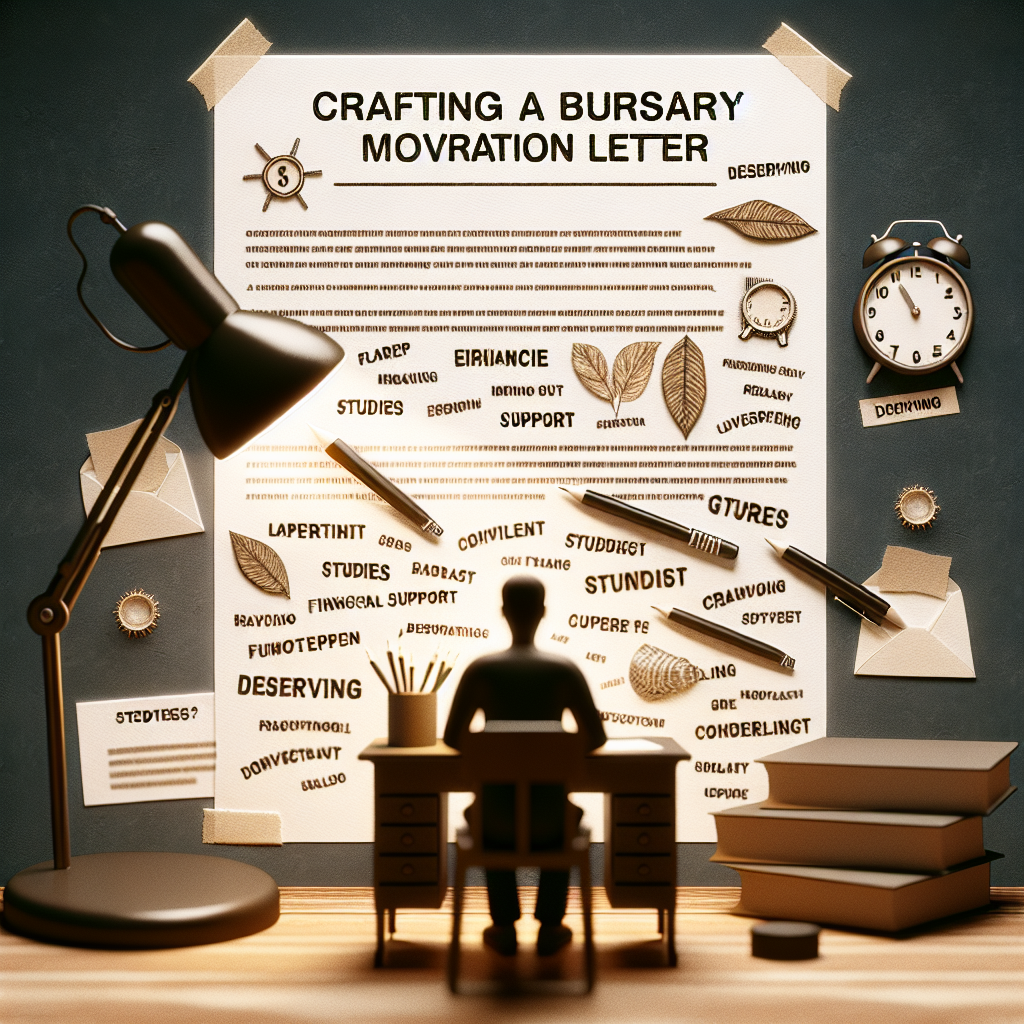A bursary motivation letter can significantly influence the decision-making process of scholarship committees. It is your chance to show why you are deserving of financial support for your studies. Storytelling is a powerful technique in crafting a compelling letter.
This article explains effective storytelling techniques to help you stand out in your bursary application.
Understanding the Purpose of Your Letter
Before you begin writing, it’s crucial to understand the purpose of a bursary motivation letter. This letter should not only demonstrate your financial need but also showcase your achievements, values, and career aspirations. Your goal is to connect emotionally with the reader, making them see you as more than just another applicant.
Starting Your Letter
The opening of your letter is your first opportunity to capture the attention of the bursary committee. A strong start sets the tone for the rest of the letter and should immediately engage the reader.
- Personal Anecdote: Begin with a short, relevant personal story that highlights your background, challenges, or ambitions. This helps in creating a personal connection and gives context to your financial need.
- Relevance to the Field of Study: Connect your story to the field you are applying for. Show passion and commitment to your chosen field by linking your anecdote to larger personal or professional goals.
Building the Narrative
After a compelling start, the next step is building your story. This part of the letter explains in more detail who you are, where you come from, and where you hope to go. This should all dovetail with why you need the bursary.
- Show Growth and Resilience: Discuss any challenges or obstacles you have overcome. Emphasize the traits and skills you have developed as a result, such as perseverance, leadership, or innovative thinking.
- Academic and Extracurricular Activities: Highlight your academic achievements and any extracurricular activities, particularly those that are relevant to your field of study. Explain how these experiences have prepared you for further education.
- Goals and Aspirations: Clearly state your academic or career objectives. Explain how the bursary will help you achieve these goals and why obtaining this funding is critical to your education and future success.
Connecting with the Committee
Your main objective is to resonate emotionally and intellectually with the bursary committee. This means connecting your personal narrative to what they value.
- Research the Bursary: Understand the goals of the bursary program and the values of the sponsoring organization. Tailor your letter to reflect these goals and values, showing how your aspirations align with them.
- Use Emotive Language: Employ emotive language to make your experiences and aspirations come alive. This will help the committee feel invested in your story and more inclined to support your application.
Concluding Your Letter
The conclusion is your last chance to make an impression. You should summarize the main points of your letter, reinforce your need and desire for the bursary, and express gratitude towards the readers for considering your application.
- Restate Your Goals: Concisely reiterate how the bursary will influence your academic and career objectives. Make sure this is straightforward and impactful.
- Appreciation: Always close with a statement of appreciation for the committee’s time and consideration. This not only shows manners but also reinforces your sincere interest in the bursary.
Final Touches
Once your draft is complete, perfecting your letter involves careful revision and proofreading. Here are some tips to ensure your letter is clear, concise, and free of errors:
- Edit for Clarity and Brevity: Make sure every sentence contributes to your narrative. Remove any redundant or irrelevant details that could distract from your main message.
- Seek Feedback: Have a mentor, teacher, or advisor review your letter. They can provide valuable feedback and help you see your letter from the perspective of the committee.
- Proofread: Check for any spelling or grammatical mistakes. A clean, error-free letter reflects your attention to detail and seriousness about your application.
Conclusion
Writing an effective bursary motivation letter is about telling a cohesive, compelling story that engages the committee on both an emotional and intellectual level. By following these storytelling techniques, you’ll be able to craft a motivation letter that not only highlights your qualifications and aspirations but also demonstrates your uniqueness as a candidate. Remember, your story is powerful—tell it well to maximize your chances of obtaining the bursary.
Additional Tips
When crafting your bursary motivation letter, consider these additional tips to strengthen your application:
- Be Authentic: While it’s important to tell a story that aligns with the values of the bursary, it’s equally crucial to be genuine. Authenticity resonates more than trying to fit a mold.
- Focus on the Introduction and Conclusion: These parts of your letter make the first and last impressions; make them strong and memorable.
- Stay Positive: Even when discussing challenges, maintain a positive tone. Focus on what you have learned and how you have grown from your experiences.
By integrating these storytelling techniques into your bursary motivation letter, you elevate your narrative from a mere statement of need to a compelling story of your journey, aspirations, and why you deserve the bursary. Keep the reader engaged, make your points clearly, and remember, this is your story—make it count!
